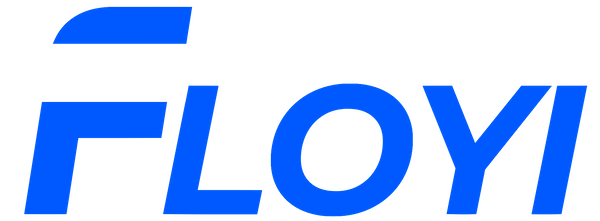| Tools | 5 min read
The 2026 Best AI Topical Map Tools: Data-Backed Comparisons, Workflow KPIs, and Floyi's 7-Step System
Compare Floyi, Surfer SEO, MarketMuse, Frase, Semrush, and more. See pricing, features, and Floyi's 91% faster, 67% cheaper workflow for AI-ready topical maps.
Modern content strategy is moving from keyword lists to entity-based semantic SEO. A well-built topical map shows search engines, humans, and AI assistants exactly how every post fits together.
This guide compares the leading SEO topical map tools, shows you when a dedicated platform beats free options, and outlines Floyi’s own 7-step workflow.
What Is a Topical Map and Why Do AI Search Engines Care in 2026?
A topical map is a structured hierarchy that organizes content around entities, relationships, and semantic context—not just keywords.
Why AI search engines care:
- They need to understand how your content connects
- They prioritize brands with clear topical authority
- They use semantic relationships for retrieval and citations
Traditional SEO: Keyword stuffing and backlinks Modern SEO: Entity relationships and semantic structure
How Did Search Evolve From Keywords to Entities?
- 2010s: Keyword density and exact-match optimization
- 2015+: Google’s Knowledge Graph and entity recognition
- 2020+: BERT and semantic understanding
- 2024+: AI Overviews, ChatGPT, Perplexity requiring structured entity relationships
Why Does a Four-Level Structure Beat Hub-and-Spoke?
Hub-and-spoke (pillar pages + clusters) is too flat. It doesn’t show:
- Subtopic relationships
- Entity hierarchies
- Content depth across levels
Four-level topical maps (MT → ST2 → ST3 → ST4) provide:
- Clear semantic hierarchy
- Granular entity mapping
- Better AI retrieval precision
What Is Generative Intent in GEO/AEO?
Generative Intent is when users expect AI to do the work for them—not just show results.
Examples:
- “Create a topical map for a DTC skincare brand”
- “Compare SEO tools in a table”
- “Draft a content brief for real estate SEO”
To win: Your content must be citation-worthy, structured, and entity-rich.
Learn more about Generative Intent →
Which AI-Powered Tools Build Topical Maps Best?
What Selection Criteria Matter Most?
- Four-level hierarchy support: Can it go beyond pillar + cluster?
- SERP-based clustering: Does it use real search data?
- Entity extraction: Can it identify semantic relationships?
- Brand alignment: Can it incorporate your brand foundation?
- AI model flexibility: Can you choose between Claude, GPT-4, etc.?
- Export options: Can you get maps in Excel, CSV, JSON?
Top Tools Compared
| Tool | Four-Level Maps | SERP Clustering | Brand Integration | Starting Price |
|---|---|---|---|---|
| Floyi | ✅ Yes | ✅ Yes | ✅ Yes | $49/mo |
| Surfer SEO | ❌ No | ✅ Yes | ❌ No | $89/mo |
| MarketMuse | ⚠️ Limited | ❌ No | ⚠️ Partial | $149/mo |
| Frase | ❌ No | ✅ Yes | ❌ No | $15/mo |
| Semrush | ⚠️ Limited | ✅ Yes | ❌ No | $139.95/mo |
| Ahrefs | ❌ No | ✅ Yes | ❌ No | $129/mo |
What’s the Single Takeaway From These Comparisons?
If you need brand-aligned, four-level topical maps optimized for AI search, Floyi is the only tool that does it natively.
If you just need keyword clustering, Surfer SEO or Frase are solid options.
What’s the Bottom-Line Advice for Picking the Right Topical Map Tool?
Choose Floyi if:
- You need semantic, entity-based topical maps
- You want brand foundation + personas integrated
- You’re optimizing for AI search (GEO/AEO)
- You need SERP-based clustering + four-level hierarchy
Choose Surfer/Frase if:
- You only need keyword clustering
- You don’t care about brand alignment
- You’re sticking with traditional SEO
How Can Mind-Mapping and Free Google Tools Boost Your Topical Map Strategy?
Which Mind-Mapping Apps Are Most Useful for Topic Ideation?
- MindMeister: Collaborative brainstorming
- XMind: Advanced hierarchy visualization
- Coggle: Simple, visual maps
Use these for early-stage ideation, then import into Floyi for SERP-based validation and semantic structuring.
How Do Google’s Free Tools Help Validate Topic Demand?
- Google Search Console: Shows what you already rank for
- Google Trends: Validates seasonality and interest
- People Also Ask: Reveals subtopic opportunities
Limitation: These don’t show entity relationships or semantic hierarchy—that’s where Floyi comes in.
What Is Floyi’s 7-Step Workflow for High-Converting Topical Maps?
- Brand Foundation: Define mission, values, voice
- Buyer Personas: Create 1-5 personas with goals, pain points, values
- Topical Research: Generate MT → ST2 → ST3 → ST4 hierarchy
- SERP Clustering: Cluster keywords by SERP similarity
- Topical Map Generation: Auto-generate semantic hierarchy
- Content Titles & Briefs: Generate AI-optimized briefs
- Export & Execute: Export to Excel, CSV, or use in Floyi’s content creation tool
When Does a Dedicated Topical Map Platform Pay Off?
What Does the Manual Workflow Really Cost?
Time per topical map (manual):
- Keyword research: 4 hours
- Clustering: 3 hours
- Hierarchy building: 6 hours
- Brief creation: 8 hours
- Total: 21 hours
Cost (at $75/hr): $1,575 per map
How Does a Platform Like Floyi Change the Equation?
Time per topical map (Floyi):
- Brand foundation (one-time): 30 min
- SERP clustering: 10 min
- Topical map generation: 5 min
- Brief creation: 30 min
- Total: 1.75 hours (91% faster)
Cost (Floyi Starter at $49/mo): $49/mo + ~$20 in credits = $69 per map
Savings: $1,506 per map (67% cheaper)
How Should Agencies Choose the Right Topical Map Tool in 2026?
What Criteria Should Guide Your Topical Map Tool Decision?
- White-label support: Can you rebrand exports?
- Team collaboration: Can multiple users work on the same map?
- Client reporting: Can you generate client-ready reports?
- API access: Can you integrate with your stack?
- Bulk operations: Can you create maps for multiple clients at scale?
How Does Floyi Score Against the Agency Checklist?
- White-label: ✅ Export as Excel/CSV, rebrand as needed
- Team collaboration: ✅ Multiple projects, user management
- Client reporting: ✅ Export-ready formats
- API access: 🔜 Coming Q1 2026
- Bulk operations: ✅ Unlimited projects on Pro+ plans
Best for agencies: Floyi or Surfer SEO
What’s Next for Topical Mapping: Entity SEO, AI Result Tracking, and Beyond?
What Emerging Trends Should You Watch in Topical Mapping?
- Entity-first SEO: Moving beyond keywords to entity relationships
- AI citation tracking: Monitoring when AI engines cite your content
- Multi-modal maps: Incorporating video, podcasts, and images into topical hierarchy
- Real-time SERP updates: Dynamic maps that adjust as SERPs evolve
What’s on Floyi’s Roadmap for the Future?
- AI citation tracking across ChatGPT, Perplexity, Gemini
- Multi-language topical maps
- Video content integration
- Advanced entity relationship visualization
Ready to build topical maps that win in AI search? Try Floyi free
About the author

Yoyao Hsueh
Yoyao Hsueh is the founder of Floyi and TopicalMap.com. He created Topical Maps Unlocked, a program thousands of SEOs and digital marketers have studied. He works with SEO teams and content leaders who want their sites to become the source traditional and AI search engines trust.
About Floyi
Floyi is a closed loop system for strategic content. It connects brand foundations, audience insights, topical research, maps, briefs, and publishing so every new article builds real topical authority.
See the Floyi workflow